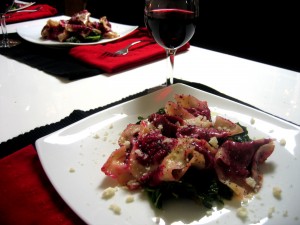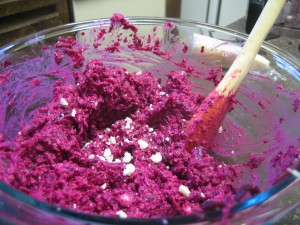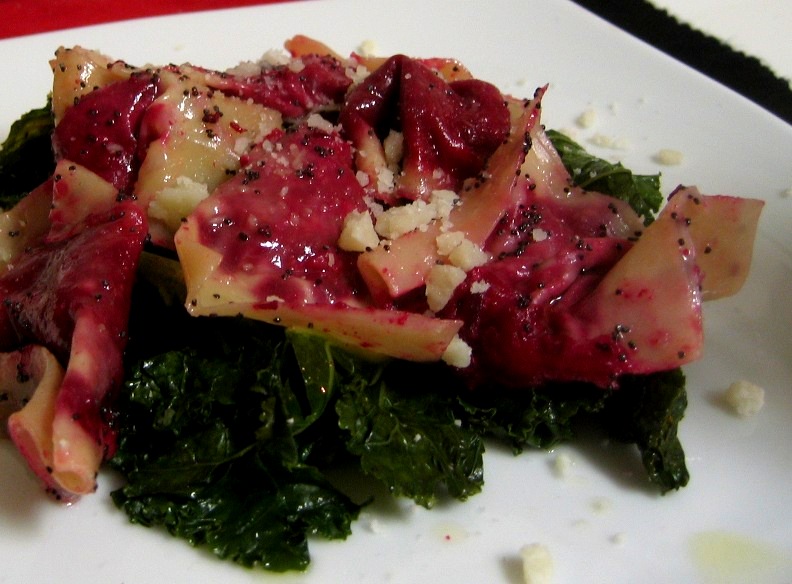Beet Ravioli
- 2 large red or golden beets (about 14 ounces)
- 1/2 cup fresh whole-milk ricotta cheese
- 2 tablespoons dried breadcrumbs
- 1 package all natural won ton wrappers
- 1/2 cup (1 stick) butter
- 1 tablespoon poppy seeds
- Freshly grated Parmesan cheese
Preparation:
Preheat oven to 400°F. Wrap beets individually in foil; place on baking sheet. Roast until tender when pierced with knife, about 1 hour. Open foil carefully (steam will escape). Cool. Peel beets; finely grate into medium bowl. Add ricotta cheese and season to taste with salt and pepper. Stir in breadcrumbs.
Sprinkle 2 smooth kitchen towels with flour. Place a wonton wrapper on work surface, keeping remaining dough covered with plastic. Place small bowl of water next to work surface. Spoon 1 teaspoon beet filling onto half of each wrapper. Dip fingertip into water and dampen edge of wrapper. Fold dough over filling, pushing out as much air as possible and pressing edges firmly to seal. Transfer to prepared towels. Repeat with remaining wrappers. (Can be prepared 1 week ahead. Transfer to rimmed baking sheet and place in freezer until frozen solid, about 6 hours. Transfer ravioli to resealable plastic bags.)
Melt butter in large skillet over medium heat and stir in poppy seeds; keep warm. Working in batches, cook ravioli in large pot of boiling salted water until cooked through, stirring often, about 2 minutes. Using slotted spoon, transfer to skillet with melted butter; toss to coat. Divide ravioli among 8 plates; sprinkle with Parmesan
My thoughts:
The magenta of these ravioli caught my eye in a winter kitchen-scape littered with potato peels. Having only met beets last Tuesday, I’m still growing accustomed to their extroverted color. It was in the middle of preparing this recipe that I realized the full meaning of “beet red.” Why is it that the good metaphors always get overcooked in pop culture?
The recipe is very easy to follow. One person can easily do all of the prep. A large Italian family is required for the assembly and cooking of the ravioli. Also, there is not much direction in how to tell when the ravioli are done. It’s not like spaghetti that you can throw against the wall to determine if it’s al dente. My first batch, which I cooked the full two minutes, was flabby and fell apart, making my water go beet red. After some trial and error (meaning I googled “ravioli cooking time”) I discovered that ravioli are done when they rise to the surface. The only other problem I encountered was how to keep the cooked ravioli warm while finishing the rest. If left them in the butter, they got greasy. But leaving them in a bowl yielded a sticky mess – even though I drizzled in some olive oil.
But even the sticky mess couldn’t smear the beauty of the final presentation. I served the ravioli on a bed of wilted garlic-y kale and crumbled Pecorino. The bitterness of the kale along with the tang of the cheese cut the sweetness of the beets.
Gary verdict: “I’m very new to beets, and I always expect meat and/or cheese in ravioli, so it threw me off, but I was enjoying it by halfway through.”



